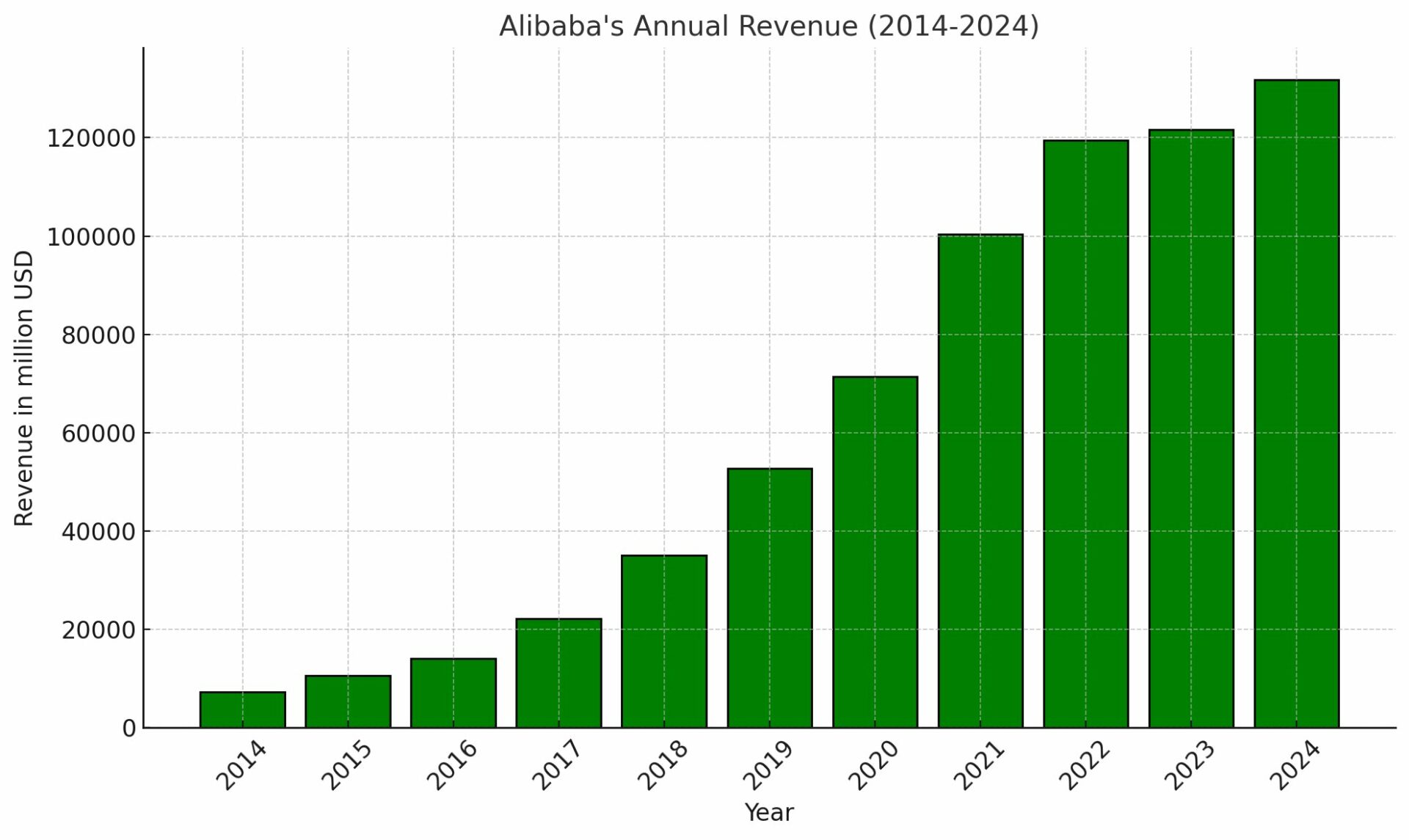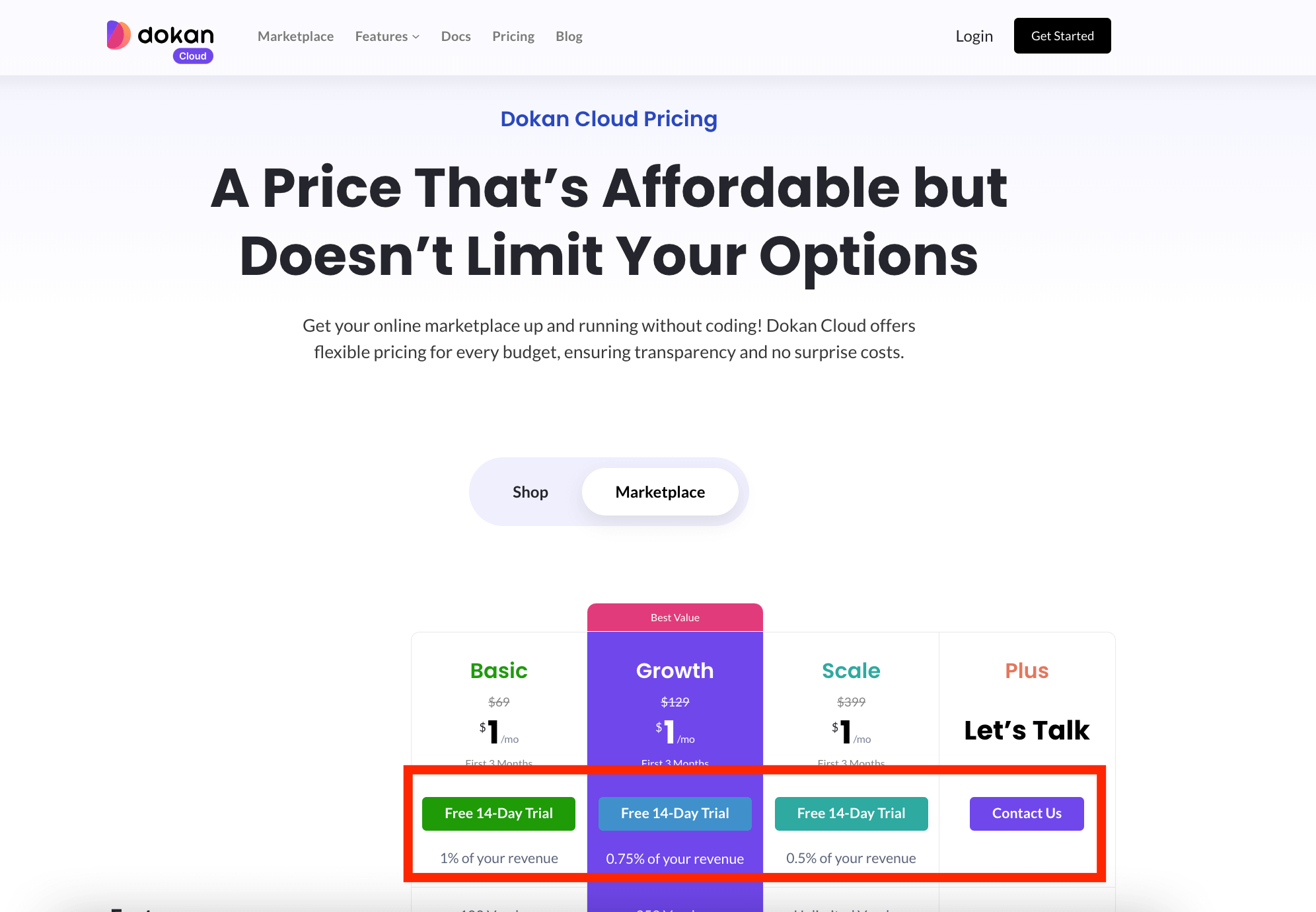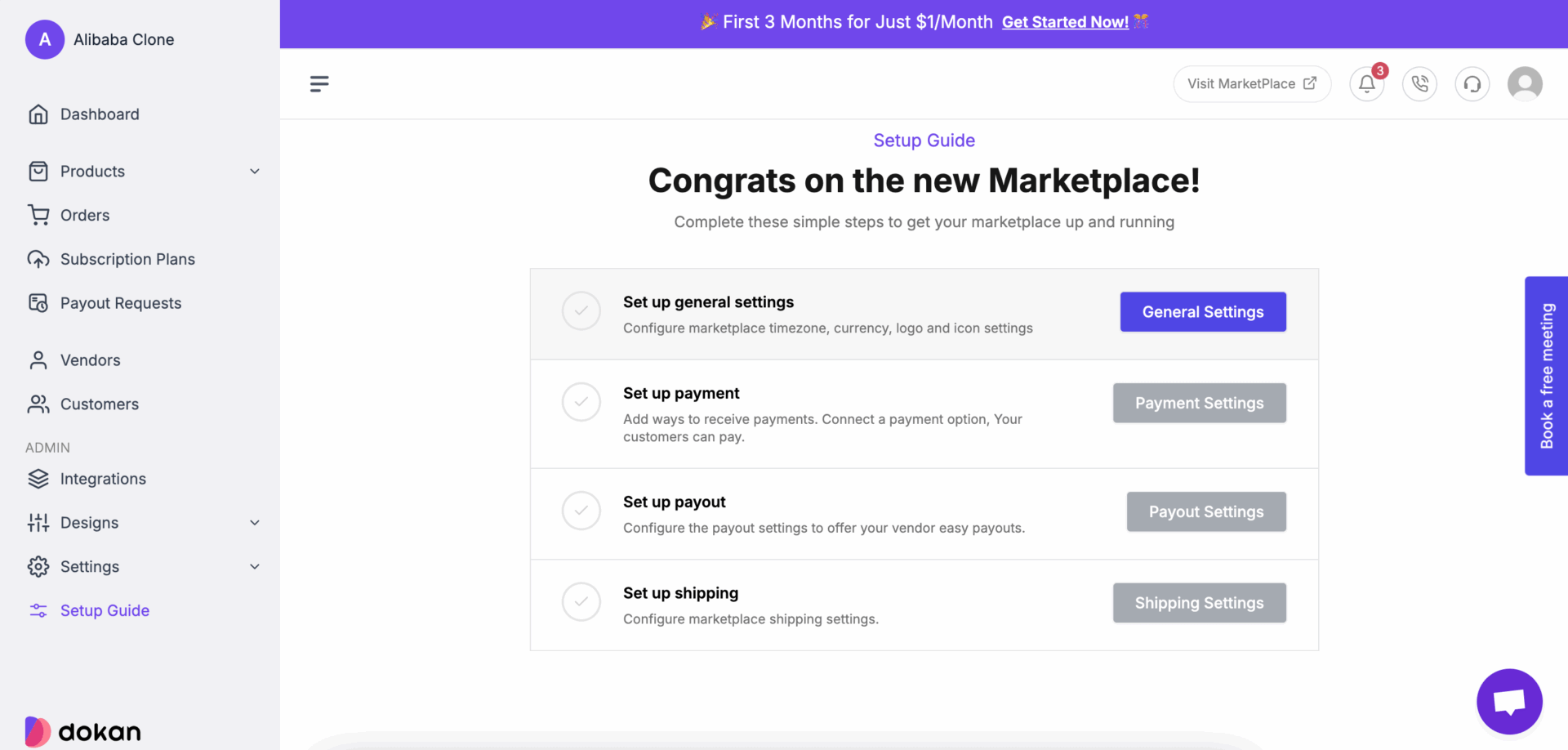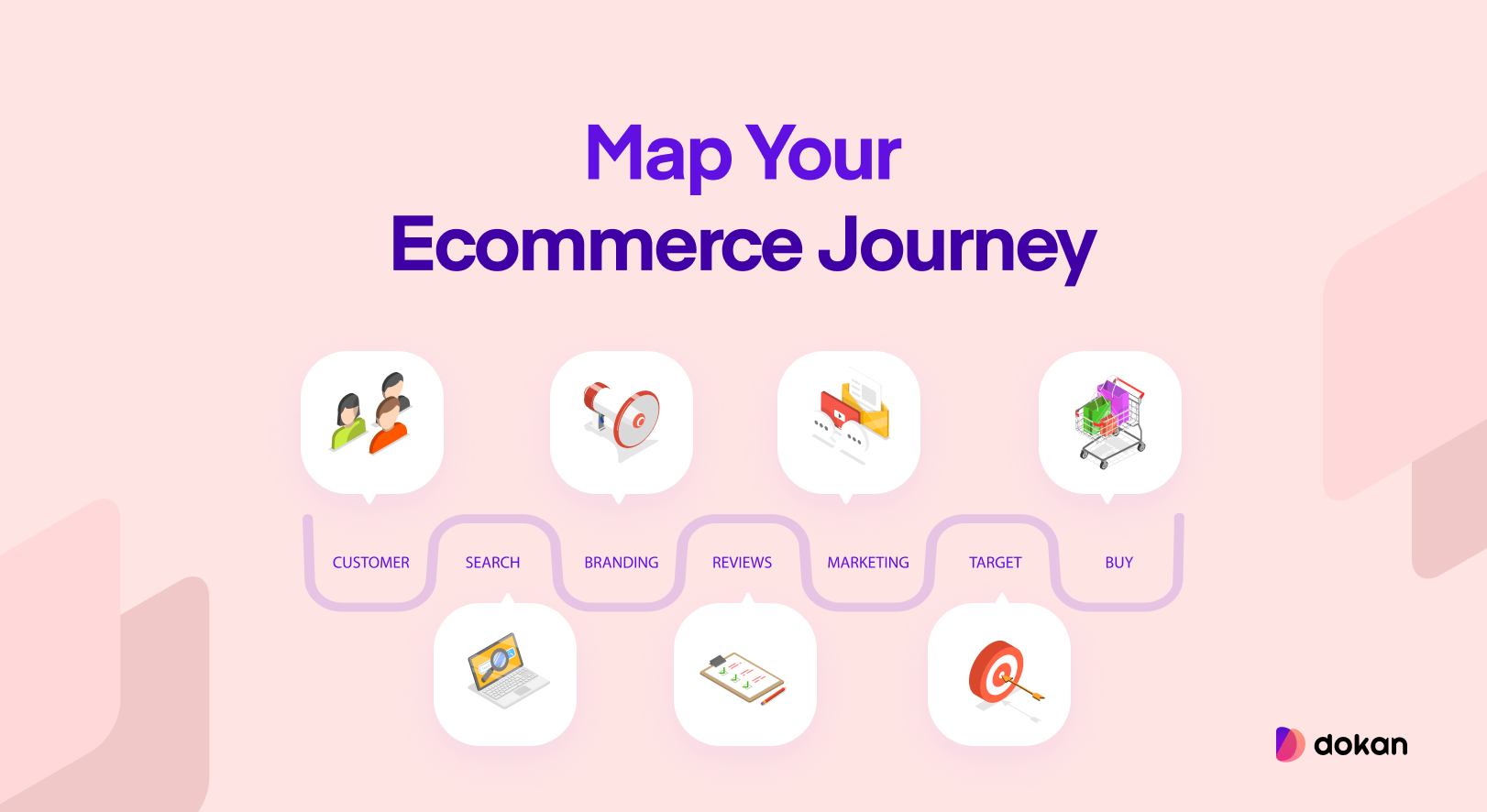Alibaba is one of the top eCommerce b2b marketplace platforms in the world. Founded by Jack Ma, this business is spread over 240 countries. As of November 2024, Alibaba’s market value is approximately and is spread over 240 countries!
For young and upcoming entrepreneurs, wanting to create a B2B marketplace like Alibaba is a dream and aspiration. Alibaba has all the features of a traditional B2B marketplace that tends to the user and connects vendors to customers easily.
Some might say that creating a marketplace like Alibaba is a complicated task. No, they are wrong. You don’t even need technical coding knowledge to create one.
With platforms like Dokan Cloud marketplace, you can create a B2B marketplace like Alibaba with ease.
Interested to know how? Why don’t we show you?
Lets start-
How Does Alibaba’s Business Model Work & Why It Has Been So Successful
Alibaba works like eBay and Amazon by connecting sellers with buyers online. But, while eBay and Amazon mainly focus on individuals and small businesses (with some options for bigger businesses), Alibaba focuses more on business-to-business (B2B) deals.
Sellers on Alibaba can list their products by adding product descriptions, photos, prices, and more. They get a seller dashboard to manage everything—from inventory and orders to shipping and talking to customers.
Alibaba also helps sellers promote their products, check their performance with analytics, and reach more buyers.
For buyers, Alibaba makes shopping easy and secure. They can browse through products and services from many sellers, search for what they need, use filters, compare options, and shop with confidence. Features like customer reviews, wish lists, and personalized recommendations make the experience even better.

The Alibaba Group generates revenue through various services and subsidiaries.
On its main B2B platform, sellers pay membership fees ranging from $166 to $1,833 per month, depending on the plan, with higher plans offering perks like advertising credits. Alibaba also earns through ads and logistics services.
On its B2C and C2C platforms, AliExpress and Taobao, Alibaba uses a commission-based model. Sellers list products for free but pay a 5% to 8% fee on each sale.
So why Alibaba has been so successful?
Before finding out why Alibaba has been so successful, let’s see some stats from Statista about Alibaba-
- Global eCommerce sales in 2023 are estimated at USD 5.8 trillion. Projected growth, is expected to grow by 39% in the coming years.
- Global eCommerce sales by 2027 are predicted to exceed USD 8 trillion. (Statista)
- Holds a 23% share, making it the world’s largest eCommerce retailer.
- In the fiscal year ending March 31, 2024, Chinese eCommerce corporation Alibaba Group recorded consolidated revenues of around 941.17 billion yuan. This translates to approximately 130.35 billion U.S. dollars.
Alibaba over time, expanded into consumer and business marketplaces like Taobao, Tmall, 1688.com, and AliExpress, becoming one of the largest eCommerce networks globally.
The reasons behind Alibaba’s success are-
- Investments in technology, logistics, and customer experience to keep it globally competitive.
- Targeting small Chinese manufacturers early on to fill a market gap.
- Understanding China’s culture and regulations gave Alibaba an edge over competitors like eBay.
- After succeeding in B2B, Alibaba expanded into consumer markets.
As you can see B2B businesses have their own merits and benefits.

Steps to Create a B2B Marketplace Like Alibaba

Now if you are motivated by the success story of Alibaba and itching to get started with your own b2b marketplace, this section is for you.
Here are the steps you need to follow to create a marketplace like Alibaba-
- Identify a Marketplace Idea
- Choose the Right Marketplace Business Model
- Validate Your Marketplace Idea
- Build a Marketplace Platform, Starting with an MVP (Minimum Viable Platform)
- Step 1: Signup to Dokan Cloud Platform
- Step 2: Complete the Onboarding Process
- Step 3: Configure Marketplace Settings- General, Payment, Shipment, Tax etc
- Step 4: Create a Subscription Plan for Vendors
- Step 5. Onboard Your First Vendor
- Launch Your Marketplace
- Go for Promotion
Let’s see the details-
1. Identify a Marketplace Idea Similar to Alibaba
You need to start by identifying a unique marketplace idea inspired by Alibaba’s model. Alibaba successfully connects manufacturers, wholesalers, and buyers on a global scale.
Similarly, consider industries or niches where there is untapped potential for B2B or B2C marketplaces. Examples being:
- Eco-friendly products: A marketplace focused on sustainable and environmentally friendly goods.
- Handmade goods: A platform for artisans, similar to Etsy but catering to wholesale buyers.
- Niche industrial equipment: A marketplace for specialized tools or machinery.
According to Statista, the global B2B eCommerce market is projected to reach $25.65 trillion by 2028, making this an opportune time to enter this space.
2. Choose the Right Marketplace Business Model
The business model determines how your marketplace will generate revenue. Consider:
- Commission-based model: Take a percentage of each transaction. For instance, Alibaba charges suppliers for premium listings and takes a commission for transactions.
- Subscription-based model: Vendors pay a flat monthly fee for platform access. This model works well for high-demand industries like fashion or electronics.
- Freemium model: Offer free access with paid upgrades, such as advanced analytics or featured product placement.
A marketplace for eco-friendly products could adopt a freemium model, where basic vendor listings are free, but vendors pay for premium features like homepage visibility or targeted advertising.
3. Validate Your Marketplace Idea
Before building, validate your idea to ensure demand. Strategies include:
- Ask potential vendors and buyers about their pain points and expectations.
- Create a simple website outlining your marketplace concept and track email signups.
- Identify gaps in existing marketplaces, such as poor customer service or limited product variety.
According to CB Insights, 42% of startups fail due to a lack of market need. Validation reduces this risk significantly.
Suppose your idea is a marketplace for second-hand industrial machinery, then use LinkedIn polls to gauge interest among business owners in manufacturing industries.
4. Build a Marketplace Platform, Starting with an MVP (Minimum Viable Platform)
An MVP allows you to launch quickly with core features and scale based on feedback. You need to add key features like:
- Vendor registration and product upload: Allow vendors to list their products easily.
- Buyer search and filtering tools: Ensure buyers can quickly find what they need.
- Secure payment gateway: Integrate reliable options like PayPal or Stripe.
For example, an MVP for a marketplace for an eco-friendly product could focus on showcasing a small catalog from early adopters with a blog highlighting their sustainability stories.
Platforms like Dokan Cloud Marketplace can help you build an MVP efficiently without heavy investment as it has a 14-day trial period and only $1/m for the first 3 months!!!
Dokan Cloud is a marketplace platform that enables users to easily create a multivendor marketplace platform. The platform possesses all the features to start a marketplace from scratch. You don’t need coding knowledge to start.
Dokan Cloud marketplace will provide you features like Alibaba including-
| Vendor Features | Customer Features | Admin Features |
|---|---|---|
| Registration | Sign up via email or social media. | Approve verified profiles. |
| Product Listings Management | Convenient Search to easily find products. | Communication |
| Order Management to Track shipping and details. | Offer multiple methods, including credit. | Update website content. |
| Coupon Management | Messaging: Chat with suppliers. | Adjust commissions or subscriptions. |
| Messaging System to Communicate with buyers. | Ratings and Reviews to Provide Feedback. | Generate sales reports. |
| Request refunds |
Want to know more about Dokan Cloud? Visit the features page.
Now, let’s see how to create a marketplace like Alibaba using Dokan Cloud Marketplace-
Step 1: Signup to Dokan Cloud Platform
First, you need to sign up for the Dokan Cloud platform to get started. Dokan Cloud offers a 14-day trial period. So you will get plenty of time to explore and test the available features before you make your final decision.
Also, after purchase, you will only need to pay $1/month for the first 3 months. This will give you time to test if your idea is market fit.

While signing up, you need to add your email address and set a password.

Dokan Cloud will take a few minutes to set up the marketplace and you will get a message that your marketplace is created.
Step 2: Complete the Onboarding Process
You need to complete the setup wizard in order to start your marketplace. Choose the Marketplace option, and add the necessary information like your store address, business name, etc to finish-

You can read the documentation on the onboarding process to get a better idea.
Step 3: Configure Marketplace Settings- General, Payment, Shipment, Tax etc
Now, it is time to configure the complex part. You need to configure the important settings for your marketplace platform.
In the general settings, you can configure the basic details, business details, domain, brand details, etc-

You can start by configuring the payment settings of the marketplace. Dokan Cloud has integration with popular payment gateways like Stripe, PayPal, Mangopay, etc. You can easily connect them to handle the transactions of your marketplace-

Also, you can set up the shipping settings from the dashboard. You can create different shipping profiles to handle complex shipping calculations, and shipping types (domestic, international) as well-

You can read the guide on how to set up shipping for your marketplace with Dokan Cloud.
We have written all the guides regarding the setup of the Dokan Cloud marketplace. Have a read.
Step 4: Create a Subscription Plan for Vendors
Now for your vendors to sign up and start selling on your marketplace, you need to create subscription plans. Dokan Cloud marketplace platform lets you create subscription plans with options to add trial period, commission (Fixed and Category), vendor capabilities, SEO, Reports-

Vendors will be able to choose a subscription plan when they sign up for your marketplace.
After all the configuration, this is what your marketplace may look like-
Step 5: Onboard Your First Vendor
The first vendors are crucial for credibility. Incentivize them with benefits such as:
- Waived subscription fees for the first six months.
- Featured listings or social media promotions at no cost.
- A dedicated account manager to assist them with onboarding and product listings.
For an eco-friendly marketplace, onboard vendors specializing in biodegradable packaging or solar-powered gadgets. Partner with them to create case studies that highlight their success.
According to research by McKinsey, marketplaces with a robust onboarding process see 50% higher retention rates for their vendors.
6. Launch Your Marketplace
A strategic launch ensures a strong start. Steps include:
- Beta Launch: Test with a small group of vendors and buyers to iron out issues.
- Launch Campaigns: Use platforms like Google Ads and Facebook to promote the launch.
- Content Marketing: Publish blog posts, videos, and case studies to highlight vendor success stories.
Organize a virtual event showcasing top products on your platform. Invite industry influencers and buyers to participate, creating buzz.
According to HubSpot, businesses that blog generate 67% more leads, making content marketing a valuable tool during the launch phase.

7. Go for Promotion
After launching, promotion is critical for eCommerce store growth. Strategies include:
- Search Engine Optimization (SEO): Optimize product pages and blog content to rank higher on Google.
- Pay-Per-Click (PPC) Ads: Run targeted ads on platforms like Google and LinkedIn.
- Referral Programs: Encourage existing users to bring in new vendors and buyers by offering discounts or credits.
- Influencer Marketing: Collaborate with industry influencers to showcase your marketplace.
For example, a marketplace for eco-friendly products can partner with sustainability bloggers to highlight unique products available on the platform.
eMarketer reports that influencer marketing can deliver an ROI of up to $5.20 for every $1 spent, making it a cost-effective promotion strategy.
Want to Create an
Furniture Marketplace?
Be a Proud Owner of a B2B Marketplace like Alibaba!!
So what do you think? At first, it looked like creating a marketplace similar to Alibaba is difficult. But after going through our article, doesn’t feel like it now right? You can easily create a marketplace like Alibaba.
But remember, business is not all about creating a platform and providing all the features. You need to ensure your users know about you and the features you provide.
Without the right eCommerce marketing strategy, you will be just another fish in the sea. But you need to become a great white shark, found rarely in the sea.
Be proactive, make a solid marketing strategy, be involved with the team, communicate, and see where that takes you.
Do let us know how your experience has been in the comment section.
Subscribe to
Dokan blog
We send weekly newsletters, no spam for sure!






Leave a Reply